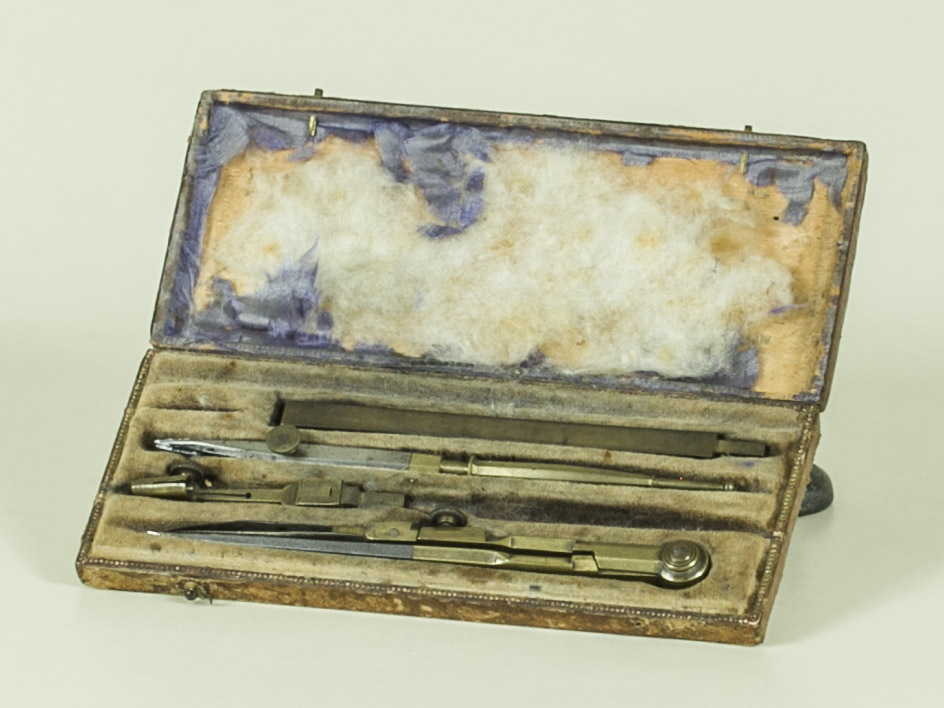03-L BILANCIA IDROSTATICA DELLA PORTATA DI UN CHILOGRAMMO-HYDROSTATIC BALANCE WITH ONE KILOGRAM WEIGHT CAPACITY
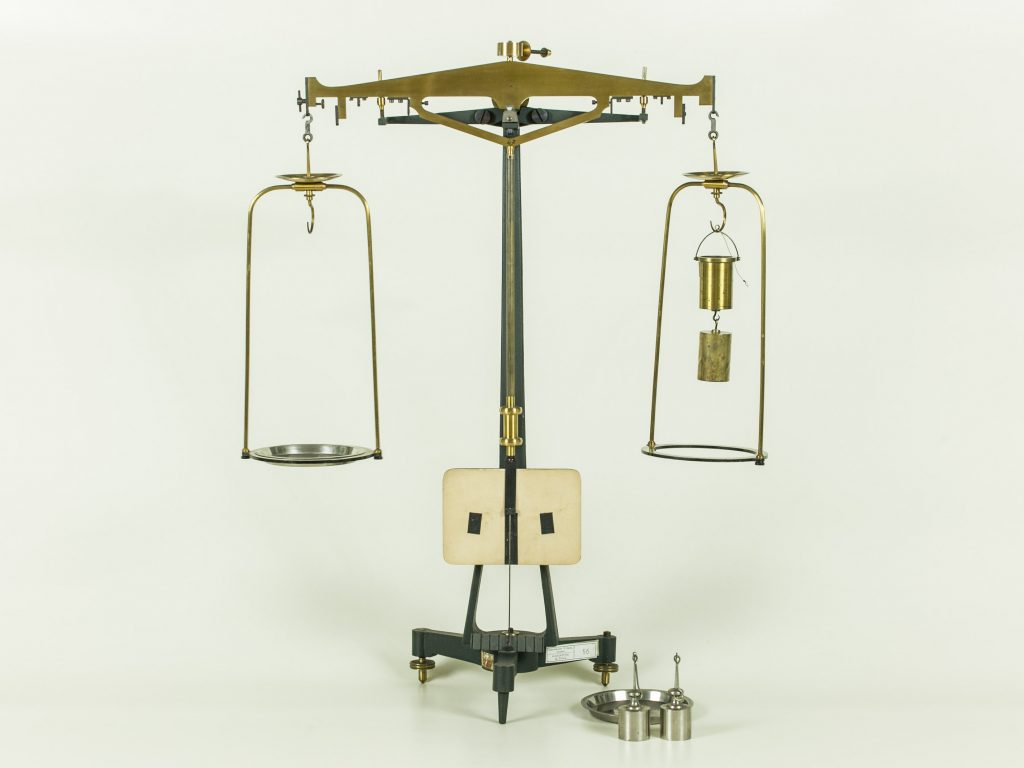
Ferro, ottone, nichel
teca: 570 × 200, h. 670
Ruprecht – Wien
1/4 XX secolo
Un treppiede in ghisa verniciato in nero con viti regolabili porta una colonnina, pure in ghisa, che regge, mediante un coltello in acciaio, il giogo in ottone verniciato. Alle sue estremità sono posti
due ganci per sospendere i pesi e il doppio cilindro di Archimede; un’intelaiatura fissa di metallo sorregge i piatti, che possono essere rimossi dal loro supporto, quando l’apparecchio viene usato come bilancia idrostatica. L’indice è fissato al giogo in modo da segnare la pesata su una scala posta alla base della colonna. All’apparato sono annessi tre pesi nichelati con gancio, di massa complessiva pari a 600 g ed un cilindro di Archimede.
Data di acquisto 1901.
Iron, brass, nickel
case: 570 × 200, h. 670
Ruprecht – Wien
1/4 XX century
A black painted cast iron tripod with adjustable screws bears a column, also in cast iron, that holds, through a steel knife, the yoke in painted brass. Two hooks are placed at its ends in order to hang the weights and the double cylinder of Archimedes; a fixed metal frame supports the dishes, which can be removed from their support, when the device is used as hydrostatic balance. The index is fixed to the yoke in order to mark the weighing on a scale at the base of the column. Three nickel-plated weights with a hook with a total mass of 600 g and one Archimedes cylinder are attached to the device.
Date of purchase: 1901.
05-L CENTIMETRO CUBO CAVO CON CUBETTO IN FERRO-CABLE CENTIMETER CUBE WITH CUBE IN IRON
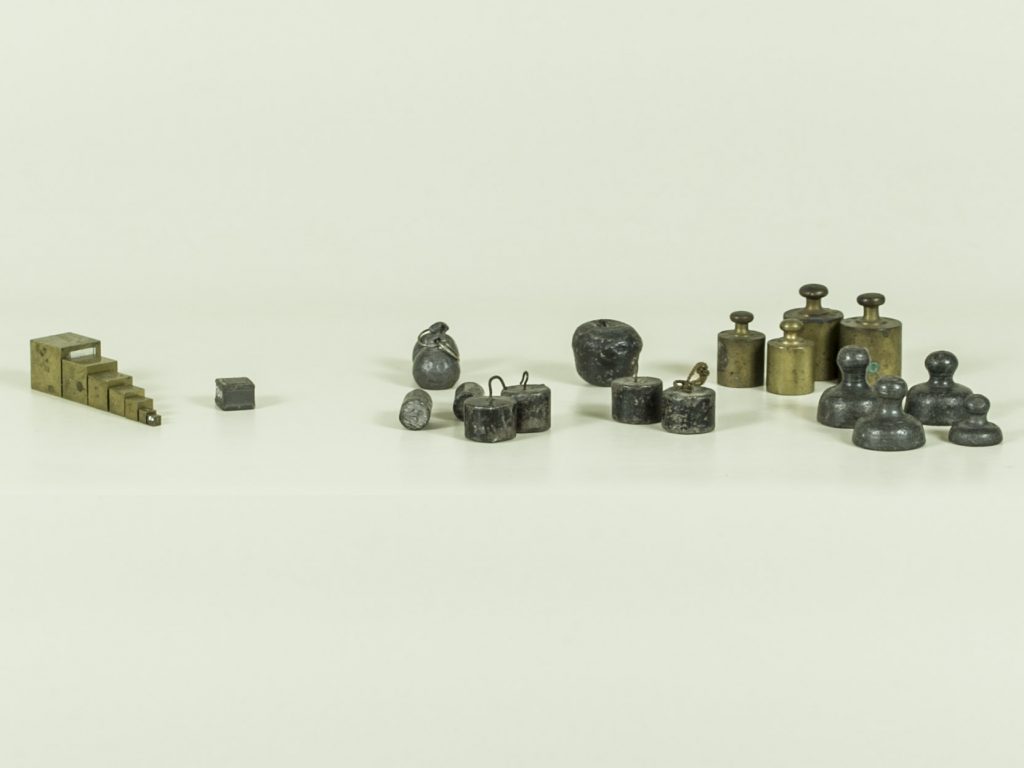
Peltro, ferro
10 × 10 × 10
1/4 XIX secolo
Centimetro cubo in peltro con un foro nel quale si
adatta perfettamente un cubetto in ferro.
Pewter, iron
10 x 10 x 10
1/4 XIX century
Hollow pewter cubic centimeter in which an iron cube fits perfectly.
06L-07L CUBO CAVO E DECIMETRO CUBO- HOLLOW CUBE AND CUBIC DECIMETRE
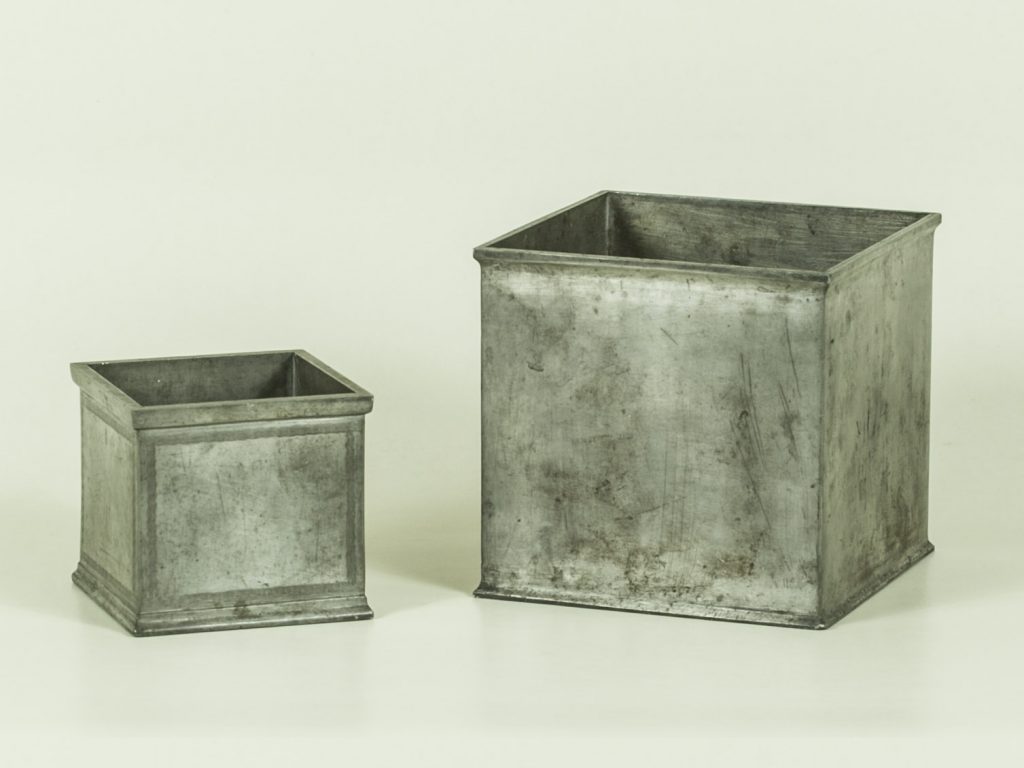
Peltro
162 x 162 x 162; 100 x 100 x 100
1/4 XIX secolo
Cubo cavo in peltro della capacità di 4,25 dm³ e Decimetro cubo in peltro che, riempito di acqua distillata a 4°C, costituisce l’unità di massa e cioè il campione del chilogrammo.
Pewter
162 x 162 x 162; 100 x 100 x 100
1/4 XIX century
Hollow pewter cube with a capacity of 4,25 dm³ and pewter cubic decimetre which, filled with distilled water at 4°C, constitutes the unit of mass, i.e. the sample of the kilogram.
08-L PARALLELEPIPEDO IN OTTONE PIENO-SOLID BRASS PARALLELEPIPED
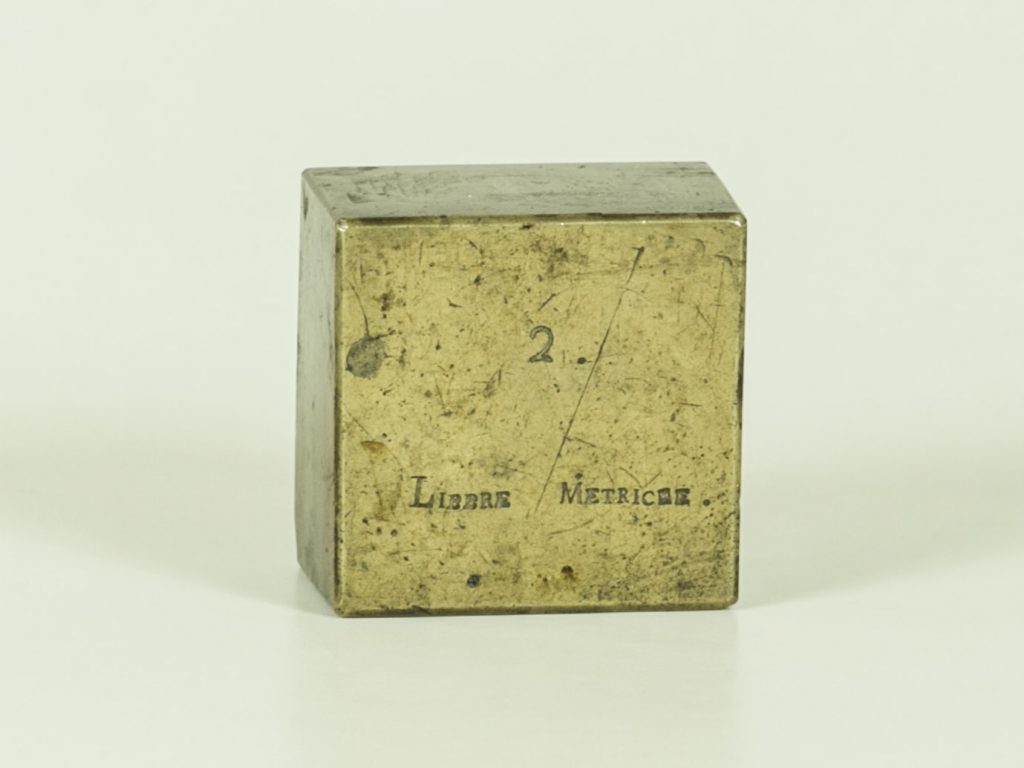
Ottone
73 x 70 x 43
1/4 XIX secolo
Parallelepipedo in ottone pieno, recante l’incisione: 2 libbre metricae, che costituisce il campione dell’unità di massa pari a 1 kg.
73 x 70 x 43
1/4 XIX century
Solid brass parallelepiped, bearing the inscription: 2 libbre metricae (“two metric pounds”), which constitutes the sample of the unit of mass equal to 1 kg.
The metric pound was used during the transitional period previous to the forced introduction of the metric system, which happened in Italy after the unification.
In the areas under French influence, hence also in the Department of the Serio, this unit of measurement was introduced during the Napoleonic period and corresponded to 1 kg.
09/L DECIMETRO CUBO CAVO SU SUPPORTO IN LEGNO E OTTONE-DECIMETER CUBE CABLE ON WOOD AND BRASS SUPPORT
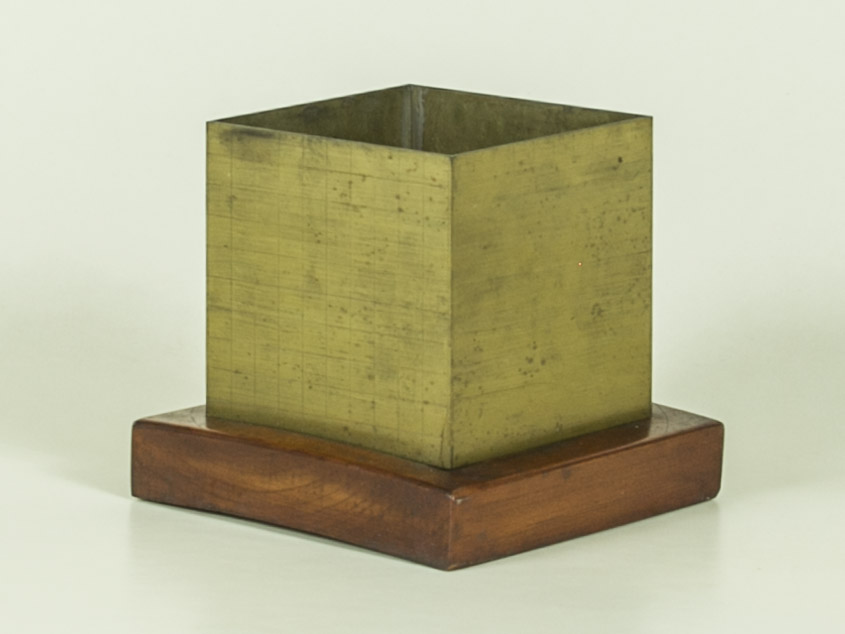
Ottone, legno
100 x 100 x 100
2/4 XIX secolo
Decimetro cubo cavo da appoggiare su una base idonea in ottone e legno; su una delle pareti del cubo sono incise le linee che suddividono la superficie in centimetri quadrati.
Hollow cube decimeter to be placed on a suitable brass and wooden base; on one of the sides of the cube there are lines that divide the surface into square centimeters. The materials and the craftsmanship make it match the sample 14 / L.
11/L PESI IN FERRO E PIOMBO CON MANICO-11/L IRON AND LEAD WEIGHTS WITH HANDLE
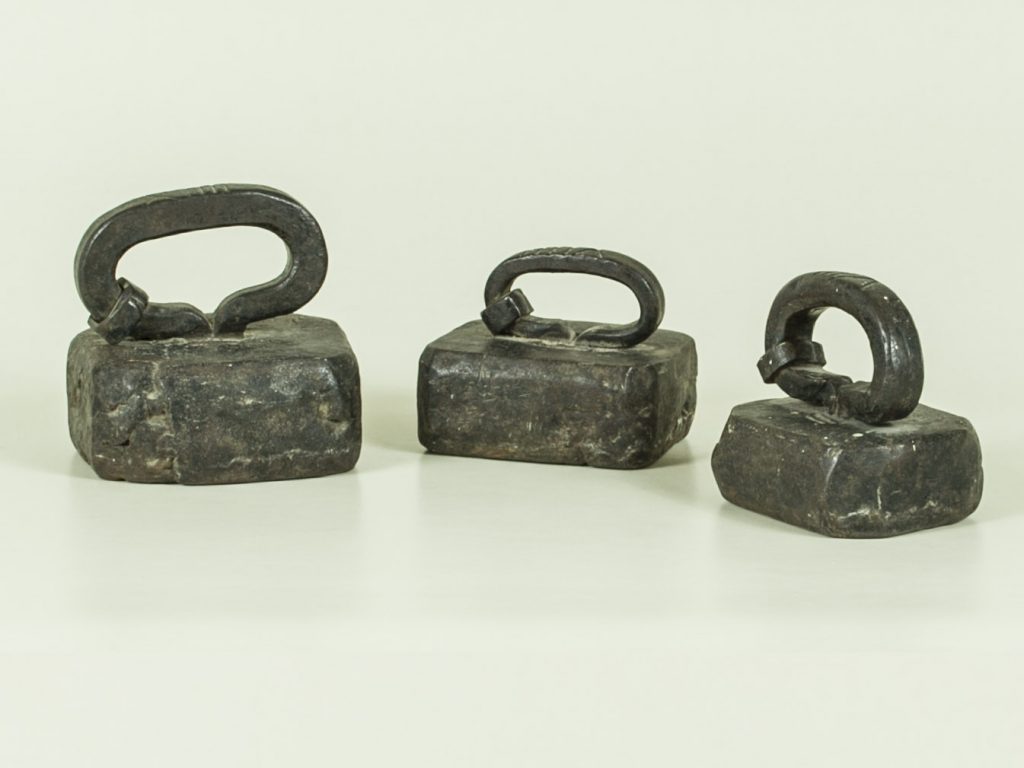
Ferro, piombo
Varie
XVIII secolo
Tre pesi in ferro e piombo con manico, contrassegnati dai numeri VIII, VIIII e XIIII di fattura antica.
Iron, lead
Various
XVIII century
Three antique iron and lead weights with handle, marked with the numbers VIII, VIIII and XIIII.
13/L REGOLO CALCOLATORE-13 / L SLIDE RULE
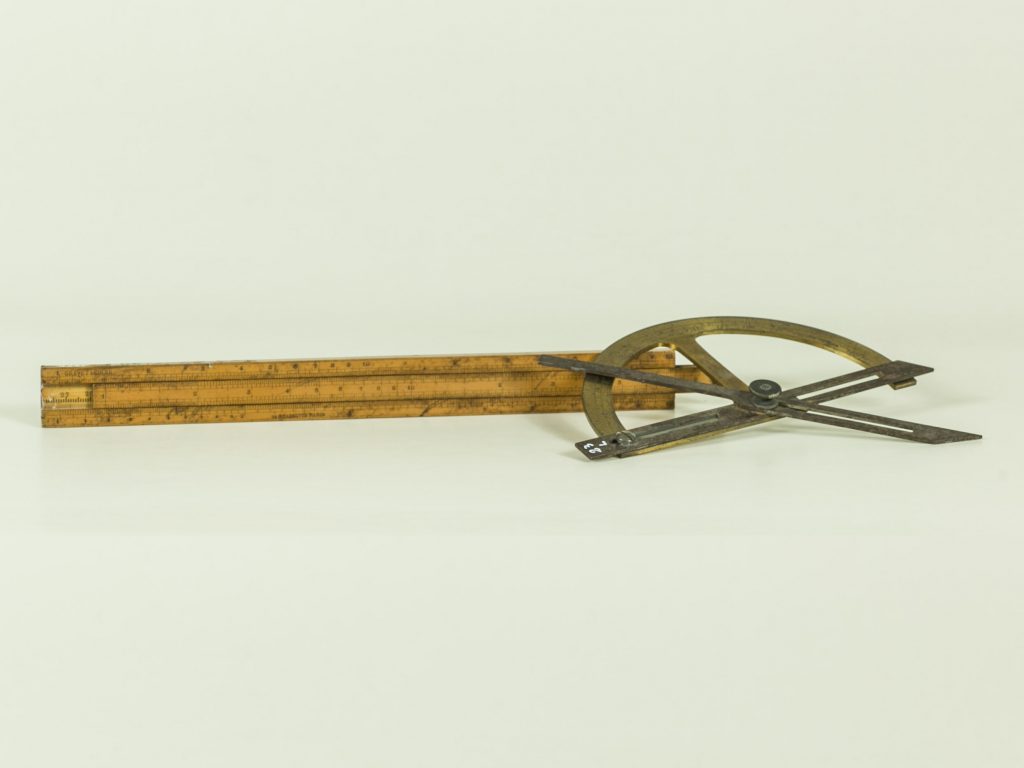
Legno
l. 260
Gravet Lenoir, 14 rue Cassette Paris
3/4 XIX secolo
Il regolo calcolatore riporta sulla parte anteriore, in alto, la firma Gravet Lenoir e in basso l’indirizzo del costruttore; sulla parte posteriore sono indicati i valori delle costanti più utili.
Wood
L. 260
Gravet Lenoir, 14 rue Cassette Paris
3/4 XIX century
The slide rule shows on the front, the signature Gravet Lenoir and below the address of the
manufacturer; on the back the values are shown of the most useful constants.
A multiplier rulers, purchase in 1871, is registered in the Methodical Catalog
14/L METRO CAMPIONE-SAMPLE METER
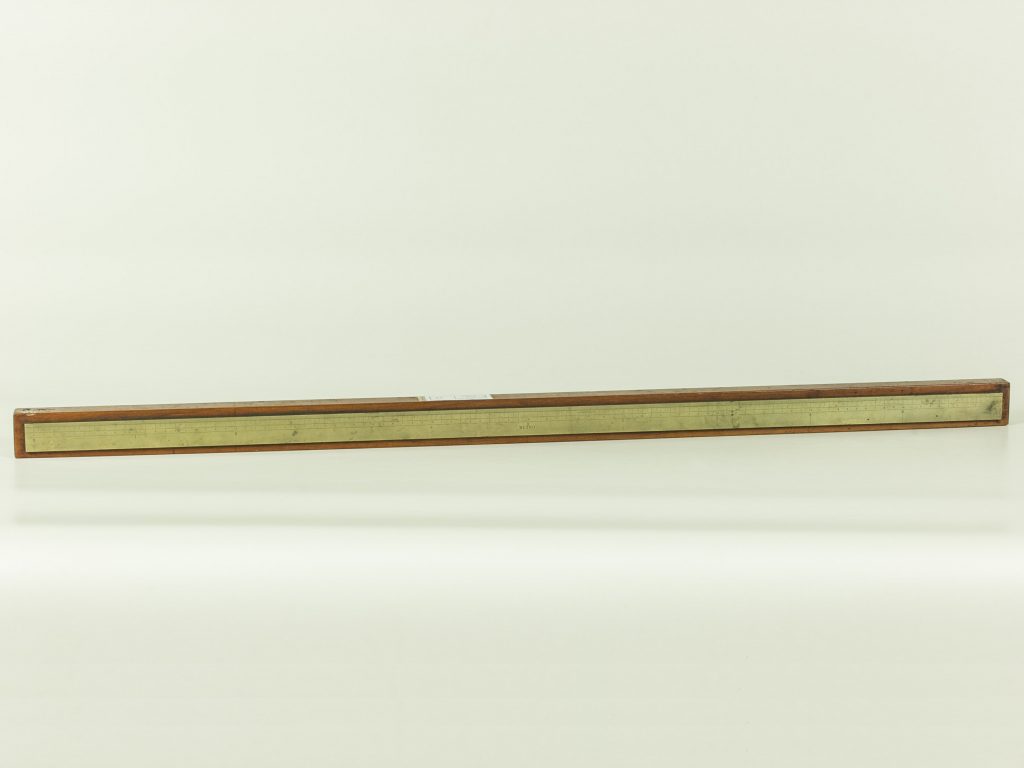
Ottone, legno
1000
Plazzoli
2/4 XIX secolo
Metro campione in ottone, suddiviso in decimetri, centimetri e millimetri, inserito in una cornice in legno lucidato.
Brass, wood
L. 1000
Plazzoli
2/4 XIX century
Brass sample meter, divided into decimeters,
centimeters and millimeters, inserted in a frame in
polished wood.
The materials and the craftmanship bring it closer to the sample
9 / L.
18 / L CRONOMETRO-CHRONOMETER
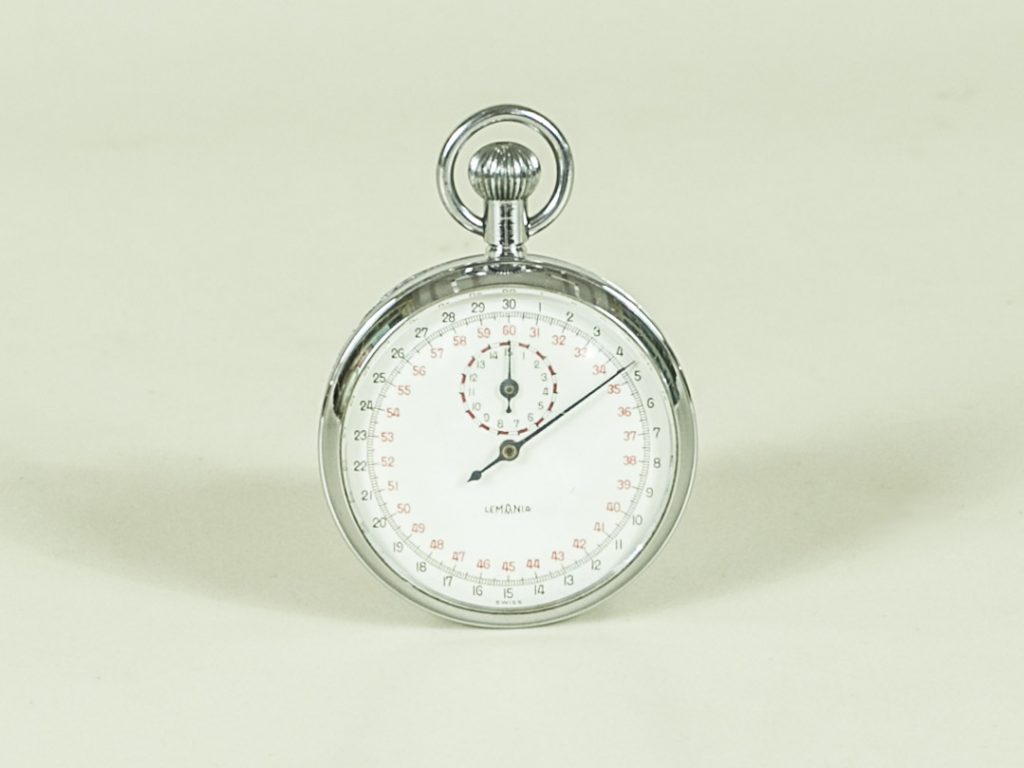
Metallo, vetro
d 50
1/4 XX secolo
Il cronometro è simile ad un orologio da taschino ed è dotato di una cassa in acciaio. Il quadrante bianco, nel cui centro è imperniata una lancetta, reca una doppia scala circolare: la più esterna è suddivisa in decimi di secondo, da 0 a 30; la più interna, di colore rosso, da 30 a 60. Nella parte superiore del quadrante è imperniata un’altra lancetta più piccola che scorre su una scala indicante i secondi, da 0 a 15.
Data di acquisto 1906.
Riferimenti: LPSAS, CCLXXXV, Inventario 1914, n.75.
Metal, Glass
d. 50
Lemania
¼ XX century
The chronometer resembles a pocket watch and is equipped with a steel watch case. In the middle of the white clock face, which has a double circular scale, is fixed one clock hand. The outer scale is divided into tenths of second from 0 to 30, the inner scale from 30 to 60. In the second part of the clock face is fixed another clock hand, but shorter than the previous one, which slides on a scale showing the seconds from 0 to 15.
Purchase date: 1906
24L COMPASSO-COMPASS
